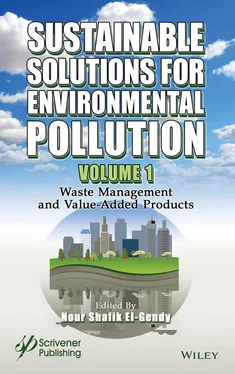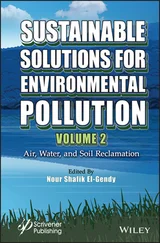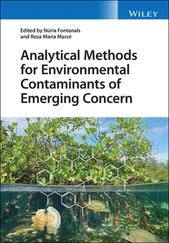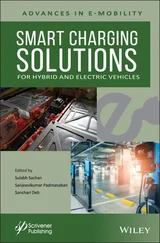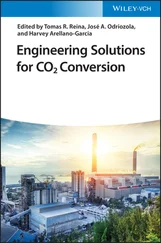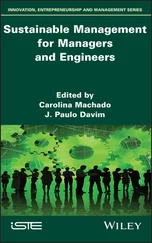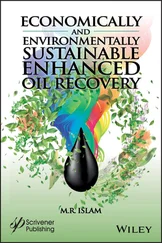Carboxylates (organic acids having a carboxyl group) are primarily categorized as (1) short-chain carboxylates, containing 2–5 carbon atoms, such as acetate, propionate, butyrate, valerate, and (2) medium-chain carboxylates, containing 6–12 carbon atoms, such as caproate, heptanoate, caprylate (Nzeteu et al ., 2018). They can be used as valuable platform chemicals and as precursors for the synthesis of a wide variety of marketable products, including fertilizers, pharmaceuticals, polymers, and personal care products (Mohan et al ., 2016). The synthesis of these chemicals via microbial fermentation of organic waste and waste biomass provides a biorefinery framework for sustainable waste management for a greener future. However, a high-rate and robust fermentation processes must be achieved to ensure the same and lower prices of these chemicals, as compared to their petroleum-based production pathways. Recent studies have shown that EF could be a potential approach to achieve this goal.
1.3.1.1 Short-Chain Carboxylates
Various short-chain carboxylates, such as acetate, propionate, butyrate, etc., can be produced via microbial fermentation of organic feedstocks, including waste biomass. The acidogenic fermentation of complex organic substrates with mixed consortia can produce a mixture of various short-chain carboxylates (also called volatile fatty acids) in the fermentation broth (Paiano et al ., 2019). These short-chain carboxylates can be either extracted or incorporated within other bioprocesses. However, a standalone acidogenic fermentation process is yet to be developed for industrial-scale synthesis of short-chain carboxylates (Paiano et al ., 2019). Over the past few decades, significant research efforts have been dedicated towards developing strategies for long-term operation of acidogenic fermentation, optimization of process parameters (e.g., retention time, pH, temperature, substrate concentration, etc.), tuning the product spectrum (i.e., composition of carboxylates) (Arslan et al ., 2016; Paiano et al ., 2019).
Recently, EF has been investigated for various short-chain carboxylates production (see Table 1.1). These studies showed promising results in enhancing the yield and productivity of short-chain carboxylates with pure and mixed-culture. For example, Villano et al . (2017) studied cathodic EF of single and mixtures of substrates (glucose, ethanol, and acetate) with undefined mixed culture. Their results showed an applied potential of -700 mV vs. SHE could increase iso-butyrate production over the control (open-circuit reactor) by 20-fold (0.43 vs. 0.02 mol/mol glucose) for a mixture of glucose, ethanol, and acetate. Interestingly, iso-butyrate yields were quite comparable for both reactors when operated with glucose as a sole substrate and a combination of glucose plus ethanol or glucose plus ethanol. Thus, their results suggested that in the presence of applied potential and mixture of substrates could stimulate the growth of iso-butyrate producing microbial population. Although no exogenous redox mediator was provided in the fermenter, cyclic voltammetry (CV) of microbial culture showed a reduction peak at -700 mV vs. SHE (same as operating working electrode potential of EF system). Thus, the authors concluded that applied potential altered the redox status of the cells by shifting intracellular NADH/NAD +ratio, which subsequently redirected their metabolic pathway towards iso-butyrate production. Recently, another study by Paiano et al . (2019) also reported a 4-fold higher n-butyrate yield with unmediated mixed-culture cathodic EF at an applied potential of -700 mV vs. SHE. The authors found that iso-butyrate yield could reach up to 0.6 mol/mol glucose when the system was operated with glucose along with its fermentation products. Furthermore, the authors performed mediated EF tests using Neutral Red and AQDS as exogenous mediators. Only the n-isomer of butyrate was produced in the presence of these mediators, suggesting mediators could introduce a high selectivity towards specific compounds.

Figure 1.3 A conceptual schematic showing combined anodic acidogenic EF coupled with cathodic EF of off-gases produced during anodic EF. The figure drawn with modification after Zhou et al . (2019).
Recently, a study by Zhou et al . (2019) combined anodic acidogenic EF of glucose coupled with cathodic EF of off-gases produced during anodic EF to improve the yield of mixed volatile fatty acids (see Figure 1.3). Their results suggested that the conversion of off-gases (mainly CO 2+H 2) to mixed volatile fatty acids on the cathode enriched with homoacetogens could contribute to ~14% of the overall VFAs recovery from the integrated process. to improve the product and carbon conversion. Thus, the development of such engineering strategies could further improve product yield from EF.
1.3.1.2 Medium-Chain Carboxylates
Due to low values of short-chain carboxylates, there has been significant interest in upgrading short-chain carboxylates to high-value chemicals, such as medium-chain carboxylates (C6-C12; caproate, heptanoate, caprylate, etc.). Particularly, chain elongation has emerged as an innovative approach for manipulating carbon chain length of the products. The biological upgrading of short-chain carboxylates (e.g., acetate, propionate, butyrate) and alcohols (e.g., ethanol) via chain elongation can be used to synthesize medium-chain carboxylates. Chain elongation can be defined as an anaerobic open-culture secondary fermentation process that converts short-chain volatile fatty acids and an electron donor into medium-chain carboxylates (Angenent et al ., 2016). The chain elongating microbes, such as Clostridium kluyveri can use the reverse β-oxidation pathway to convert short-chain volatile fatty acids to medium-chain carboxylates with ethanol as an electron donor (Roghair et al ., 2018). For every five chain elongation reactions, one additional mole of ethanol is oxidized into acetate (Roghair et al ., 2018; Seedorf et al ., 2008).

Among various medium-chain carboxylates, caproate (C6) has received increasing interest due to its application as a precursor for aviation fuels and various commodity chemicals (Roghair et al ., 2018). Jiang et al . (2020) studied the impact of cathodic EF on the mixed culture chain elongation for caproate production from acetate+ethanol. Integrating EF with the chain elongation process could increase the caproate specificity by ~28% with a fresh carbon felt cathode compared to a control reactor (open circuit without electrodes). However, EF with an acclimated cathode failed to increase the caproate specificity; caproate specificity was highly varied with the substrate concentrations. Thus, their results suggested a direct interaction between chain elongating microbes and the fresh electrode. Overall, their results suggested that deploying EF can provide an excellent opportunity to tune the chain elongation process for achieving higher efficiency.
Over the past few decades, there has been a growing interest worldwide to cut transport emissions. Given the rapidly increasing demand for transport fuels, many countries worldwide are now investing in alternative fuels from bio-sources. At present, ethanol (E10, 10% ethanol mixed with 90% gasoline) is the most widely used transport biofuel with potential as a valuable gasoline replacement to reduce transport emissions (Daylan and Ciliz, 2016). Hence, over the last decade, the global bioethanol market has seen rapid growth. Currently, most bioethanol is produced through the fermentation of corn grain using industrial yeast strains (Gomez-Flores et al ., 2018). However, pH imbalances introduced by the formation of unwanted metabolites and subsequent inhibition, batch-to-batch inconsistency, decreasing product yield, and product quality have been identified as major bottlenecks in ethanol fermentation complex feedstocks (Awate et al ., 2017). Anaerobic fermentation of glucose may produce a wide variety of by-products, including formate, acetoin, glycerol, acetate, and lactate (Awate et al ., 2017; Speers et al ., 2014). To address these challenges, genetically modified microorganisms have been implemented to redirect the fermentation pathways towards the target product (i.e., ethanol) (Awate et al ., 2017). Recently, a few studies investigated EF as a strategy for alleviating these bottlenecks in fermentative ethanol production from different complex feedstocks, including glycerol, food waste, etc. ( Table 1.1).
Читать дальше
